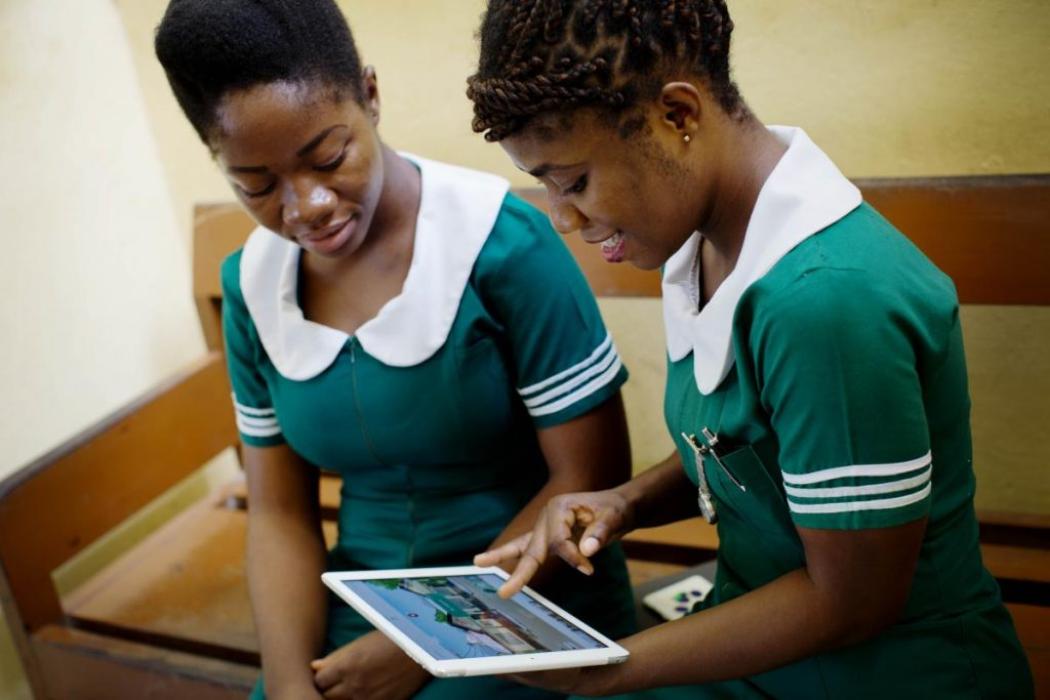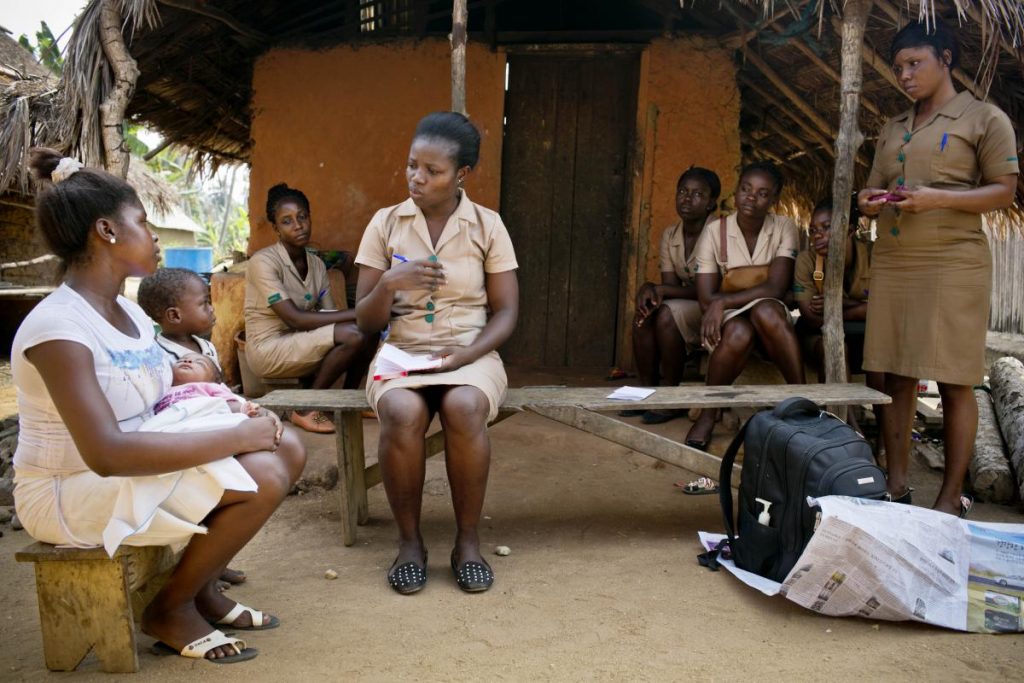Transforming Education through Student Retention and Recruitment

Midwifery Students accessing eLearning modules on a tablet (Kate Holt/Maternal Child Survival Project, MCSF)
By Julia Bluestone, Jhpiego and Frontline Health Workers Coalition
This blog was originally posted on the Transformative Education for Health Professionals blog From Dialogue to Action.
Now is the time to push even harder for better and more strategic investment in health workforce education. In September, the UN Secretary General’s High-Level Commission on Health Employment and Economic Growth (HEEG Commission) released its report – “Working for Health and Growth: Investing in the Health Workforce” – which lays out a compelling investment case for the health workforce, including investing in transformative education.

Community health nursing students conduct community outreach visits (Kate Holt/Maternal Child Survival Project, MCSF)
Evidence from the report reveals the economic return on investment in health is 9 to 1. The HEEG Commission was led by French President François Hollande and South African President Jacob Zuma. The Commission was co-convened by the World Health Organization, the International Labour Organization, and the OECD to examine the economic case for investing in the health workforce. One of the 10 recommendations from the report speaks specifically to our aim, “Scale up transformative, high-quality education and lifelong learning so that all health workers have skills that match the health needs of populations and can work to their full potential.” In light of the staggering estimate that if current trends continue, the world will be short 18 million health workers by 2030 needed to deliver essential health services, now is the time for advocacy for transformative education, and momentum is on our side.
As Chair of the Frontline Health Workers Coalition – an alliance of 36 United States-based public and private organizations working together to urge greater and more strategic U.S. investment in frontline health workers in developing countries as a cost-effective way to save lives and foster a healthier, safer and more prosperous world – this report provides us with valuable advocacy messages. In my work at Jhpiego supporting transformative education approaches in the countries where we work, this report provides evidence that investing in transformative education is a best buy.
Transformative education is often referenced in relation to increased use of technology to reach greater numbers, or new models of health workforce education. I would like to focus on a more subtle but important transformation—rational student selection and recruitment.
In my work at Jhpiego supporting health worker pre-service education programs, we often see student selection and recruitment policies that need transformation. These include student selection criteria that is irrational or unhelpful, such as: assigning students to cadres based not on interest or passion, but only on test scores; limiting students to younger ages, effectively ruling out women who are looking to re-enter or enter the workforce later in life.
This HEEG Commission report directly contradicts such criteria, reminding us that “women drive wealth creation through their employment in the health economy. In a sample of 123 countries, women make up 67% of employment in the health and social sectors compared with 41% of total employment.” The HEEG Commission report urges us to “maximize women’s economic participation and foster their empowerment through institutionalizing their leadership, addressing gender biases and inequities in education and the health labour market”. Ensuring rational student selection that reinforces social accountability to communities, is inclusive of age and gender and builds on interest and passion for a chosen profession is a low-tech solution we should embrace.
When it comes to student recruitment, we continue to see opportunities to transform to better include gender and improve retention. Included in the WHO transformative education guidelines knowledge gaps and research agenda, this question is posed, “Do changes in recruitment practices have an impact on the retention of health workers in underserved poor, isolated or rural zones?”
In 2011-2012 Jhpiego performed an integrative review of the literature to analyze factors contributing to quality pre-service education and created a conceptual model that shows the links between essential elements of quality pre-service education and desired outcomes. Our literature review found that targeted recruitment of qualified students from rural and low-resource settings appears to be a particularly effective strategy for retaining students in vulnerable communities after graduation.
